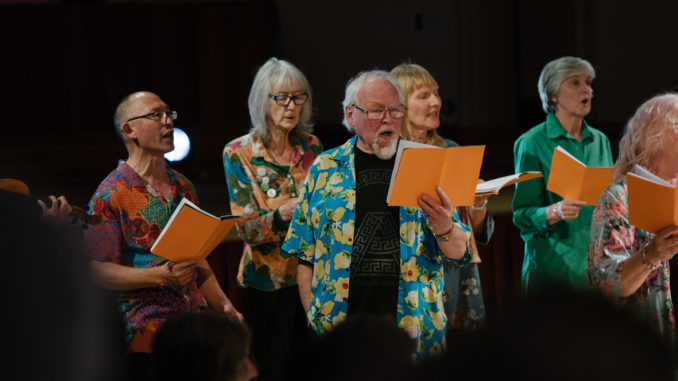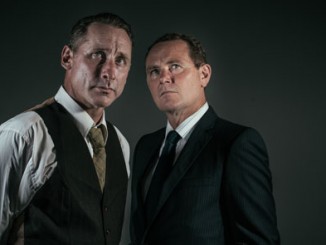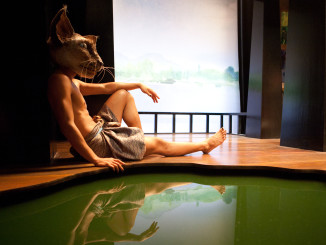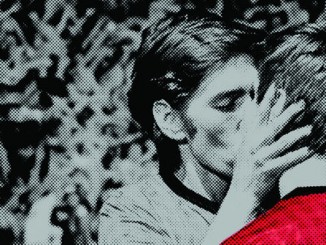
Singing the hope of listening
The terms ‘innovation’, ‘diversity’, and ‘inclusion’ are being redefined on stage in the production Sing It To My Face . The Auckland debut of Barbarian Productions’ contemporary inter-generational documentary theatre/musical performance collects opinions from three different generations, sets them to music, and gets performers to literally sing these opinions to each other’s faces. It’s a show that breaks boundaries and conventions, bringing together a diverse cast and audience in a communal choral event that explores the need for social cohesion and social change.
Director Jo Randerson compiled the performed text from community consultations and public responses to survey questions. While these responses have obviously undergone an editing and selection process, there is nevertheless a sense of verbatim authenticity to the spoken words and lyrics which situates the production within the tradition of Documentary Theatre. Documentary Theatre is an approach that tends to rely on the ‘actual’ rather than the ‘imaginary’, and is a practice that can provide commentary on events, persons and issues normally marginalised by popular modes of publicity. Documentary Theatre also typically celebrates marginalised narratives, investigates contentious issues, and is often situated as a catalyst for social change. Sing It To My Face shares all these attributes, albeit presented in an innovative musical form largely through the impressive musical direction and composition of the very talented Julian Raphael. Julian is the director of Community Music Junction, which has been operating in Wellington for the past ten years, giving children and adults the chance to sing and make music together. Sitting at a piano in the centre of the Concert Chamber, Julian provided musical accompaniment while also conducting the songs – all the while exuding confidence, experience and encouragement that he has developed over years working in a variety of community contexts.
The production opened with Julian leading the audience through a rehearsal of key phrases and choruses to four songs that we were invited to sing along to during the performance. Configured in traverse staging with two audience banks facing each other and leaving a space for the performers in the centre, the very diverse audience were able to gaze across the space at each other. This emphasised the communal sense of event and helped to bolster audience participation. Positioned in the space are large monitors which along with a projection on the far wall, display the lyrics to the songs. Throughout the performance the piano is occasionally accompanied by clarinet (J. Y. Lee), violin (Marika Balzat), some guitar and couple of ukuleles, but it is the voices of the close to sixty performers that form the heart of the musical performance.
The cast of performers are grouped into three broad categories, with the 30-60 year-olds present in the performing area at the start to rehearse the canons with the audience. They sing the opening number ‘Lucky Generation’, telling the audience: ‘We have created amazing technology, we fought hard for human rights’. Once the song is finished, members of the group step forward to deliver some spoken words: ‘We partied when the Berlin Wall came down. We supported peace, justice, kindness and the rule of law’.
Soon this middle-aged group is joined on stage by an older group of over sixty-year-olds, wearing colourful Hawaiian shirts. These members take to the floor to sing ‘Third Age Psalm’ encouraging the middle-aged group across the space from them to take things a bit easier: ‘Don’t get weighted down by the pressures and tensions of these middle years, The time will come when you look back and say how good they were’. In the playful repartee that is sung back and forth, there are some wonderful one-liners. These include the plea from a senior performer to the younger generation to ‘stop the overuse of active wear’, or the retort that older generation are ‘racist, judgmental and exclusive’. The ‘telling off’ that frames the songs is also punctuated by sincere acknowledgements, for example, when a middle-aged member steps forward to thank the older generation for their fight against apartheid, for women’s rights, and for ‘the sacrifices you made for peace – your protests against war’. A third group that enters is the under 30s, who make their presence felt by shouting from the balcony before rushing the space to take centre stage while singing to the audience: ‘our generation is good, our generation is pretty lit really’. In compiling the libretto, Randerson has found a wonderful way to balance humour with serious concerns such as racism, homophobia, environmental degradation and rampant neoliberalism.
The large cast that has come together for this very short run only had one-week rehearsal and unfortunately this shows a little in performance. I found that I wanted to be absorbed in the delivery of the lyrics but because of poor projection I often had to refer to the monitors or projectors to follow the words and discern their meaning and this produced a kind of split attention which was ultimately distracting. Also distracting was the upstaging and the earnestness in some of the performer’s delivery and the over-emoting that one associates with musical theatre which distracted a little from the meaningful words. But these are minor issues that can be ironed out during the run. It is only a shame that the run isn’t longer so that a wider audience can enjoy this innovative show. One of the lines we hear sung is ‘all of us is magic’. This production certainly was enchanting. In a time of fraught and divisive politics this is a production that engages with real problems and, in so doing, sings the hope of listening.
Sing it to my Face plays the Town Hall Concert Chamber until 20 October.




Leave a Reply